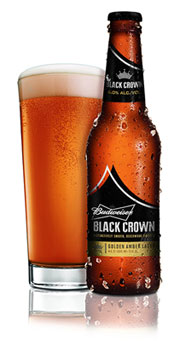
But Tom Fox, a nationally-recognized expert in retail sales and category management for the beverage industry, isn’t convinced that the burst of sales that came from Platinum — and may also come from Black Crown, at least initially — mean that the company has built a long-term brand.
“I have my reservations,” Fox said. “If they continue to support innovations with media, I imagine they can keep some of the demand flowing. Much of Platinum’s success is because of solid blocking and tackling from an execution standpoint. A lot of it comes from the muscle that nobody else has.”
That “muscle,” as Fox puts it, is a strong wholesaler network that is constantly looking for more innovative products, and a national group of retailers hungry for the incremental ring that a well-marketed line extension can bring.
But even with the company’s vaunted execution, not every new ABI innovation is an overnight success, let alone a long-term one — a particularly troubling point when looking at the company’s inability to sell a trade-up in taste, a la its now-retired American Ale, which landed with a thud, rather than a reduction in calories, like its Atkins diet-friendly Select line. McGauley said some introductions like now retired American Ale and Bud Light Golden Wheat beers had missed the mark altogether, but he called it a cost of doing business.
“If we don’t make mistakes, we are bad innovators,” he said. “The question is, how do we make our brands more meaningful?”
It’s a pressing question because the issue of meaning, of local grown and bigger-flavored products, is the one that craft seems to have down cold — and it’s starting to encroach on the shelf space of the bigger brands by sheer force of numbers; through June of 2012,SIG estimated that craft beer boasted 3,537 different packages. Even more importantly, craft is beginning to look at convenience as a space where it can potentially grow, as well, with both Boston Beer and Sierra Nevada moving into the channel. In other words, the craft brands are thinking about execution.
“There is a battle for shelf space,” said Trent McKinster, the corporate director of beer at SuperValu, a grocery retail network of more than 2,400 stores. “Many large domestics are trying to innovate and protect that space. I don’t think it’s their complete strategy, but it is one aspect.”
Bud recognizes the challenge of craft, and is trying to fight back with its own craft or high-end offerings. In 2011, Budweiser scooped up Goose Island, a Chicago-based craft brewery, for $38.8 million. This year, it is turning Goose Island into a national brand, beginning with tap handles and following up with bottles throughout the Bud network. But ABI’s much more prominent high-end offering, Shock Top, is taking a more familiar route: debuting in 2006 as a Belgian-style wheat ale brewed with lemon and lime peels, coriander and orange, the brand has, since then, extended to include raspberry, pumpkin and lemon-shandy flavors, an IPA blend and a beer-cider hybrid called Honeycrisp Apple Wheat.
Such line extensions are well practiced for ABI; whether they will ultimately be meaningful to consumers will probably be more of an essay question than a fill-in-the-blank.
Editor’s note: This article appeared in the February issue of BevNET Magazine.
